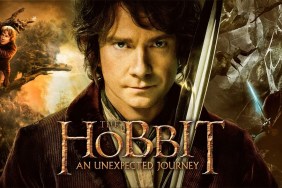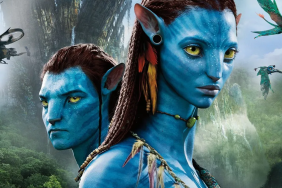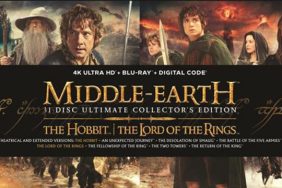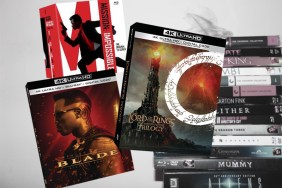Earlier today, ComingSoon.net attended the New York press conference for Peter Jackson’s The Hobbit: An Unexpected Journey and as you might expect, with so many reviews calling out the use of new technology in the higher frame rate of 48FPS, he was eventually asked about it.
As some may know, ComingSoon.net’s first review wasn’t very positive about the decision to film/screen at 48 FPS and we thought it was only fair if we gave Jackson himself a chance to respond to the detractors.
“I’m fascinated by reactions,” he told the room full of journalists from across the country. “I’m tending to see that anyone under the age of 20 or so doesn’t really care and thinks it looks cool, not that they understand it but they often just say that 3D looks really cool. I think 3D at 24 frames is interesting, but it’s the 48 that actually allows 3D to almost achieve the potential that it can achieve because it’s less eye strain and you have a sharper picture which creates more of the 3-dimensional world.”
As far as the history of the decision to go 48, Jackson had seen some tourist-related films shot in higher frame rates, including George Lucas’s “Star Tours” ride, and then he directed an 8-minute film at 60 FPS in 3D for the “King Kong” attraction for Universal Studios.
“I just thought ‘Wow, this is so cool, I wish we could do a feature film like this.’ While there were mechanical projectors in the cinemas around the world, they were often 24 FPS and there was an infrastructure that existed since the 1920s. The advent of digital projectors is what allowed all this development to happen.”
It was Jackson’s editor who attended a trade convention and came back saying that the moment had arrived to shoot a feature film in a higher frame rate since projectors and cameras would support it.
“Warner Bros. were very supportive,” he continued. “They just wanted us to prove that the 24 frame version would look normal, which it does, but once they were happy with that, on first day, when we had to press that button that said ’48 frames’ even though on that first day we started shooting at 48 FPS, you could probably say there wasn’t a single cinema in the world that would project the movie in that format. It was a big leap of faith.”
“The big thing to realize is that it’s not an attempt to change the film industry,” Jackson added. “It’s another choice. The projectors that can run at 48 frames can run at 24 frames – it doesn’t have to be one thing or another. You can shoot a movie at 24 frames and have sequences at 48 or 60 frames within the body of the film. You can still do all the shutter-angle and strobing effects. It doesn’t necessarily change how films are going to be made. It’s just another choice that filmmakers have got and for me, it gives that sense of reality that I love in cinema.”
Look for more coverage of The Hobbit: An Unexpected Journey in the coming weeks before it opens theatrically on Friday, December 14. You can check out the latest TV spot below!










